Social-Emotional Learning
Explore the impact of Social-Emotional Learning in schools: enhancing student behavior, well-being, and academic success.
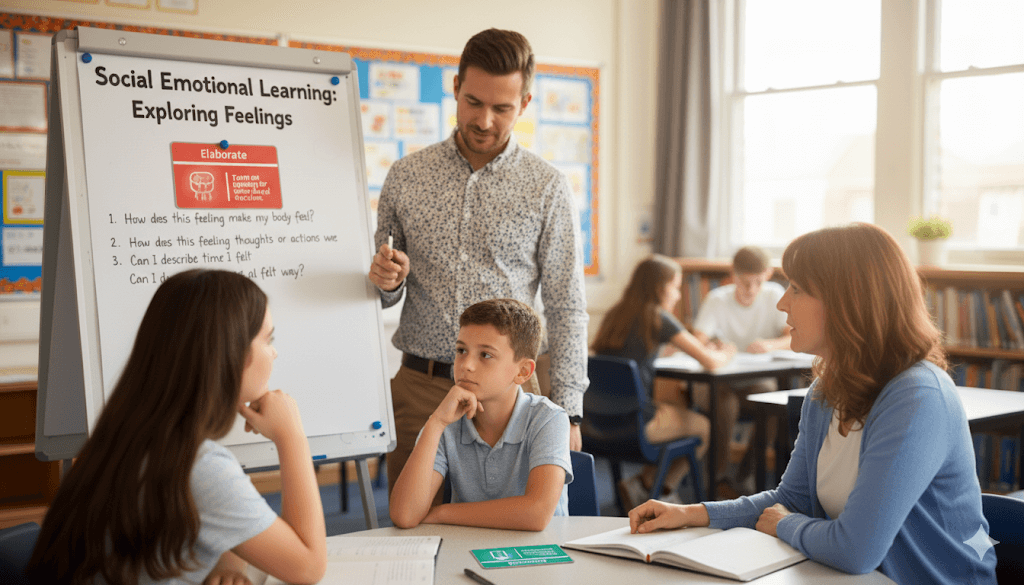

Social-emotional learning (SEL) represents a fundamental shift in how we understand student development and academic success. Far from being a supplementary programme, SEL provides the scaffolding for children to develop crucial competencies: understanding emotions, building relationships, making responsible decisions, and navigating social complexities. For educators seeking to cultivate resilient, empathetic, and academically successful students, integrating SEL into daily practice has become increasingly vital.
Key Takeaways:
Albert Bandura's social-cognitive theory provides crucial insights into how children acquire social and emotional competencies. Students learn not just through direct instruction but by observing peers and teachers model emotional responses, problem-solving strategies, and interpersonal behaviours. This observational learning becomes particularly powerful when combined with opportunities for guided practice and reflection.
The reciprocal nature of social-cognitive theory explains why classroom community matters so profoundly. Students simultaneously influence and are influenced by their social environment. A classroom where emotional expression is normalised and respected creates conditions for all students to develop stronger emotional literacy.
John Bowlby's attachment theory illuminates why relationship quality profoundly impacts SEL outcomes. Students with secure attachments - characterised by trust, safety, and responsiveness—demonstrate stronger emotional regulation and social competence. These secure relationships need not originate solely from home; teachers who provide consistent, warm, and responsive interactions can foster secure attachments that support emotional development.
This theoretical understanding transforms how we view challenging behaviours. Rather than seeing disruption as defiance, attachment-informed SEL recognises behaviour as communication about unmet emotional needs. This shift enables more compassionate and effective responses that build rather than damage relationships.
Maslow's hierarchy positions social-emotional needs as prerequisites for higher-order learning. Students struggling with belonging or self-esteem cannot fully engage with academic content.
This framework justifies prioritising emotional intelligence development alongside traditional curriculum goals.
Erikson's psychosocial stages highlight age-appropriate SEL focuses. Early childhood centres on autonomy and initiative, middle childhood on competence and industry, whilst adolescence grapples with identity formation. Understanding these developmental trajectories helps educators tailor SEL approaches to match students' evolving capacities and concerns.

Early childhood represents a critical window for SEL development. Young children's brains are particularly plastic, making this period optimal for establishing emotional and social foundations. Effective early years SEL begins with environmental design: calm spaces with soft lighting, comfortable seating areas for emotional regulation, and visual supports for emotion identification.
Circle time provides structured opportunities for emotional expression and listening. Rather than treating circle time as routine administrative tasks, skilled educators transform these moments into SEL laboratories. Children practise turn-taking, learn emotion vocabulary through "feelings check-ins," and develop empathy by responding to peers' experiences.
Mindfulness-based activities adapted for young learners - such as "belly breathing" with stuffed animals or "listening walks" - help children develop present-moment awareness and self-regulation skills. These practices, when introduced playfully and consistently, become lifelong tools for managing stress and maintaining focus.
Effective early years SEL requires educator collaboration and continuous development. SEL development teams within professional learning communities share strategies, troubleshoot challenges, and maintain consistency across classrooms. This collaborative approach ensures that SEL isn't dependent on individual teacher expertise but becomes embedded in institutional culture.
Regular team meetings might explore questions like: How do we respond when children struggle with emotional regulation? What language do we use consistently across classrooms? How do we communicate SEL progress to families? These discussions transform isolated practices into coherent, school-wide approaches.
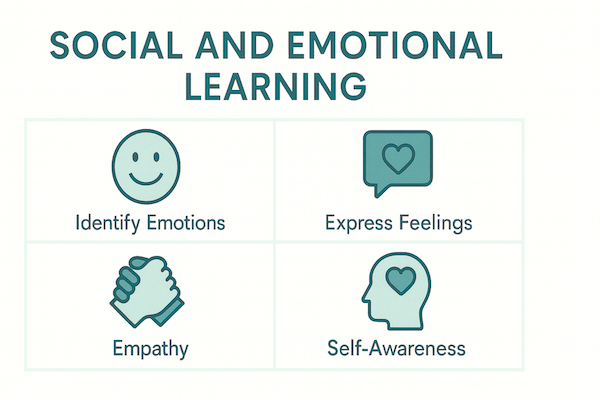
Executive function—the mental processes enabling planning, attention, and task completion—significantly predicts academic success. SEL systematically develops these capacities. When students practise waiting their turn during group activities, they strengthen inhibitory control. Planning collaborative projects builds working memory and cognitive flexibility.
Research demonstrates that students with stronger executive function skills show better reading comprehension, mathematical reasoning, and scientific thinking. SEL provides the scaffold for developing these foundational cognitive capacities through emotionally engaging, socially embedded activities rather than isolated drills.
Chronic stress impairs memory formation, attention, and higher-order thinking. SEL equips students with tools to recognise and manage stress responses. Deep breathing, progressive muscle relaxation, and cognitive reframing become academic performance tools as much as emotional coping strategies.
Students who can calm test anxiety, manage perfectionism, and recover from setbacks maintain better access to their cognitive resources. This emotional regulation directly translates to improved test scores, more consistent homework completion, and greater classroom participation.
Modern education increasingly emphasises collaborative learning, yet many students lack the social skills to work effectively in groups. SEL systematically develops the communication, perspective-taking, and conflict resolution skills that make collaborative learning productive rather than frustrating.
When students can negotiate roles, integrate diverse viewpoints, and manage disagreements constructively, group work becomes a powerful learning multiplier. These collaborative competencies prepare students not just for academic success but for twenty-first century workplaces that prioritise teamwork and interpersonal effectiveness.
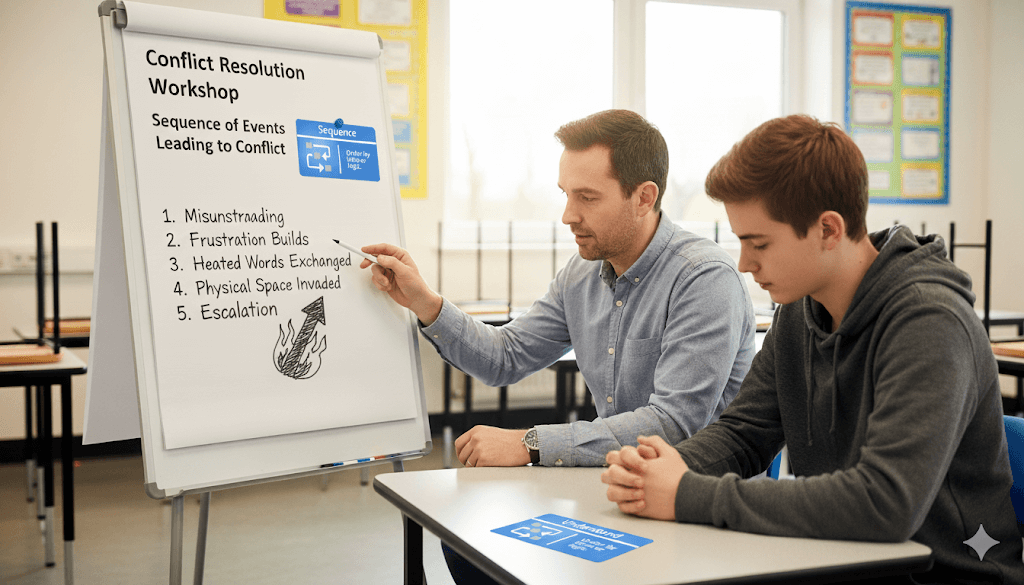
SEL fosters growth mindset—the belief that abilities can develop through effort and strategy. By helping students understand emotions around failure and challenge, SEL reframes struggle as learning opportunity rather than threat. This psychological shift profoundly impacts academic persistence and achievement.
Students who view mistakes as information rather than indictments take more intellectual risks, seek challenging tasks, and maintain effort through difficulty. These motivational benefits compound over time, creating trajectories of increasing academic engagement and success.
SEL's academic impact extends beyond immediate grade improvements. Students with strong social-emotional skills show better school attendance, lower dropout rates, and higher college enrollment. These long-term benefits reflect SEL's role in developing not just academic skills but academic identity—seeing oneself as capable, valued, and belonging in educational settings.
The cumulative advantage of SEL becomes particularly pronounced for students facing adversity. Trauma-informed schools that prioritise SEL help vulnerable students develop resilience and maintain academic engagement despite challenging circumstances.
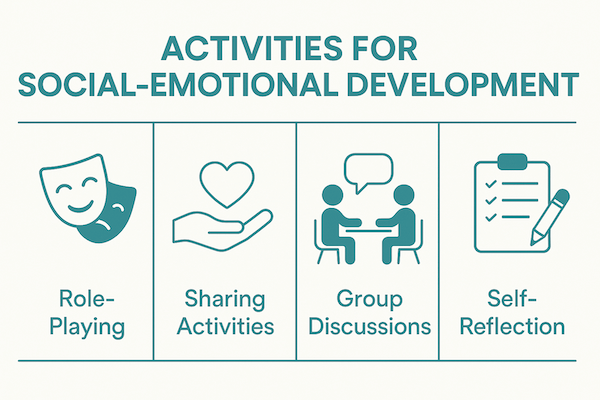
SEL systematically cultivates empathy through structured activities and reflection. Literature discussions explore characters' emotions and motivations. Role-playing exercises help students experience situations from multiple perspectives. These activities move beyond superficial "walking in someone's shoes" to develop genuine understanding of others' experiences.
Culturally responsive teaching through SEL acknowledges diverse emotional expressions and relationship patterns. Students learn that empathy requires understanding not just individual feelings but cultural contexts shaping emotional expression and interpersonal expectations.
Effective communication involves more than vocabulary; it requires reading non-verbal cues, managing one's emotional expression, and adapting messages for different audiences. SEL provides structured practice in these sophisticated skills through activities like peer mediation training and restorative circles.
When conflicts arise - as they inevitably do - SEL-equipped students possess tools for resolution. They can identify underlying needs, generate creative solutions, and repair relationships after ruptures. These skills transform conflicts from relationship-damaging crises into relationship-strengthening opportunities for growth.
SEL promotes developing behaviours for learning that support all students' participation and belonging. When classrooms explicitly value diverse strengths, normalise struggle, and celebrate growth, marginalised students find space to thrive. This inclusive approach benefits not just struggling students but enriches the entire learning community.
Group norms developed through SEL processes - such as "mistakes help us learn" or "everyone's voice matters"—create psychological safety. Students feel secure taking intellectual risks, asking for help, and contributing unique perspectives when they trust their classroom community will respond supportively.

Integrate emotion words systematically throughout language instruction. During read-alouds, pause to name characters' emotions precisely: frustrated rather than mad, disappointed rather than sad. Create word walls featuring emotion gradients (irritated → angry → furious) that students reference during writing.
Frame word problems around social situations requiring emotional understanding. "Sarah felt nervous about her presentation. If her heart rate increased by 20 beats per minute, and her normal rate is 70 bpm, what's her current heart rate?" This integration makes abstract concepts concrete whilst practising emotional recognition.
History lessons provide rich opportunities for perspective-taking. Students research historical figures' emotional experiences, write diary entries from multiple viewpoints, or debate decisions considering historical actors' emotional contexts. This approach deepens historical understanding whilst developing empathy.
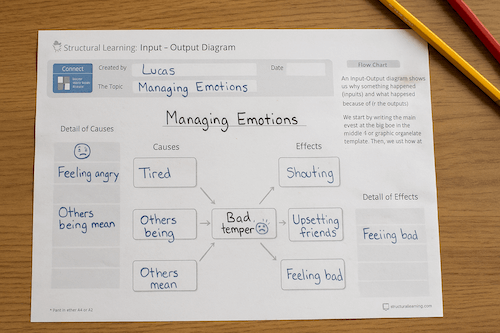
Explore the neuroscience behind emotions during biology units. Students learn about amygdala responses, prefrontal cortex regulation, and stress hormones. Understanding the biological basis of emotions enhances self-regulation by demystifying emotional experiences.
Visual arts, music, and drama provide natural SEL integration points. Students create artwork expressing emotions, compose music reflecting different moods, or develop theatrical pieces exploring relationship dynamics. These creative outlets offer alternative pathways for emotional expression and processing.
PE lessons offer embodied SEL practice. Students navigate competition stress, practise good sportsmanship, and develop team cohesion. Explicitly discussing emotions during physical activities - frustration with losing, joy in achievement, anxiety about performance - normalises emotional awareness in all contexts.
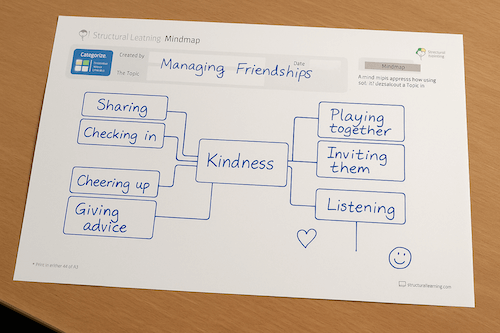
Geography lessons exploring global challenges develop social awareness and responsible decision-making. Students consider how climate change affects different populations emotionally, not just economically. This broader perspective cultivates empathy and motivates student agency for positive change.
Computing lessons address online relationships and digital emotional literacy. Students learn to interpret emotions without non-verbal cues, manage cyberbullying, and maintain healthy technology boundaries. These skills become increasingly crucial as digital interactions proliferate.
Implement brief reflection prompts concluding each lesson: "What emotion did you experience when solving that problem?" "How did working with your partner feel?" These micro-reflections build metacognitive awareness whilst reinforcing subject content through emotional processing.
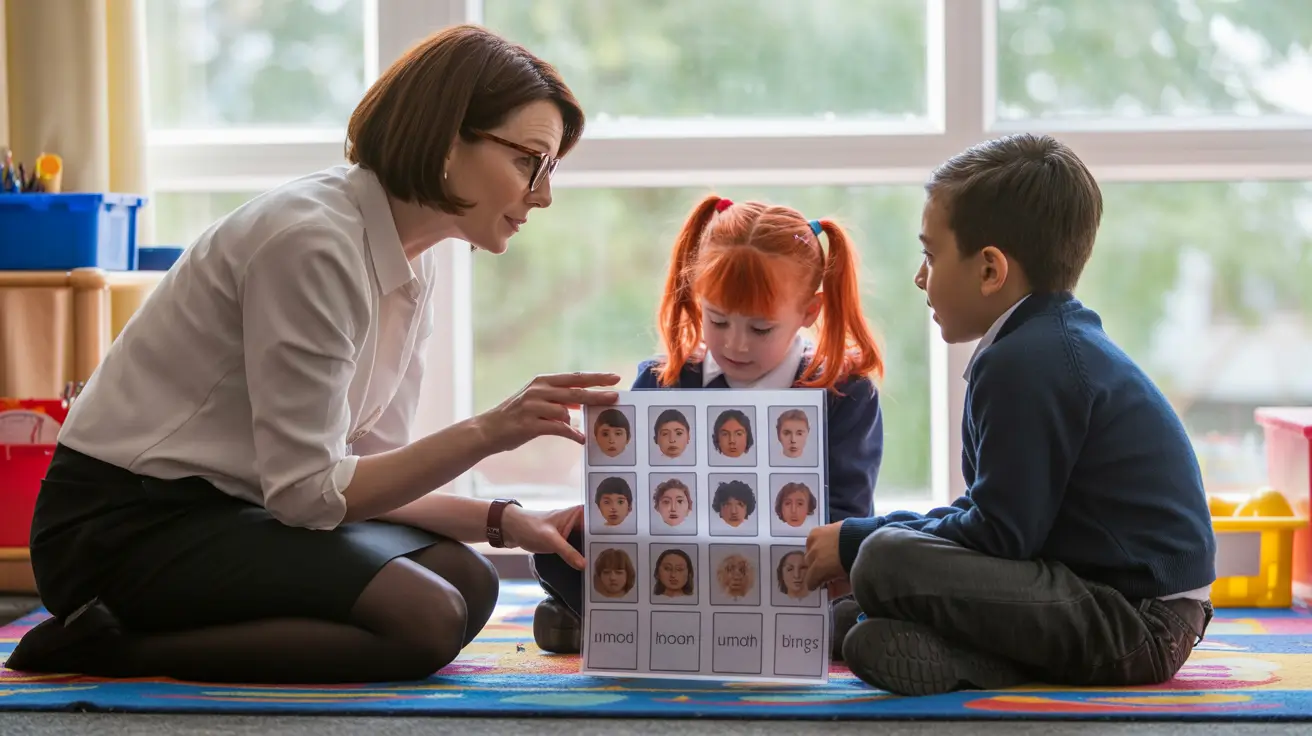
Sustainable SEL requires leadership that models emotional competence and prioritises relationship quality. Principals who acknowledge their own emotions, admit mistakes gracefully, and prioritise staff wellbeing create cultures where SEL flourishes. This modeling cascades through the organisation, influencing how teachers interact with students and each other.
Responsive teaching approaches that adapt to students' emotional states become standard practice rather than exceptional accommodation. Staff meetings include emotional check-ins. Professional development addresses educator SEL alongside student SEL. These systemic changes embed SEL in institutional DNA rather than treating it as an add-on programme.
School design profoundly impacts emotional climate. Calm-down corners in every classroom, sensory gardens for regulation breaks, and flexible seating arrangements that facilitate different interaction patterns all communicate that emotions matter. These environmental modifications support promoting students' wellbeing through multiple pathways.
Visual displays celebrate emotional growth alongside academic achievement. Hallways feature emotion regulation strategies, friendship skills posters, and student-created artwork exploring feelings. These ambient reminders reinforce SEL concepts throughout the school day.
Measuring SEL progress requires moving beyond traditional academic metrics. Observational rubrics capture relationship skills development. Student self-assessments track emotional awareness growth. Portfolio approaches document SEL journey through artifacts like conflict resolution examples or empathy-demonstrating writing samples.
Regular data review identifies students needing additional SEL support before social-emotional challenges manifest as behavioural or academic problems. This proactive approach prevents escalation whilst ensuring all students receive appropriate SEL instruction intensity.

Many parents lack familiarity with SEL terminology and goals. Initial communications should connect SEL to outcomes parents value: academic success, friendship development, and future career readiness. Use concrete examples rather than abstract concepts: "When children can calm themselves down, they solve maths problems more accurately."
Developing a social-emotional curriculum becomes more effective when families understand and reinforce concepts at home. Regular newsletters sharing SEL vocabulary, highlighting classroom strategies, and suggesting home extensions create common language between school and family.
Move beyond information-sharing to experiential learning. Family workshops where parents and children practise SEL skills together build competence and buy-in simultaneously. Activities like family emotion charades, collaborative problem-solving challenges, or mindfulness exercises become shared reference points.
These workshops also surface cultural variations in emotional expression and relationship patterns. Acknowledging and incorporating diverse perspectives enriches the SEL programme whilst ensuring cultural responsiveness.
Provide specific, manageable ways families can reinforce SEL at home. Weekly challenges like "Gratitude Week" or "Kindness Missions" create structured opportunities for practice. Digital resources—apps, videos, online games—extend SEL learning beyond school hours.
Share simple strategies parents can embed in daily routines: discussing emotions during bedtime stories, problem-solving sibling conflicts using school frameworks, or practising deep breathing during homework frustration. These micro-interventions accumulate into significant SEL growth.
Some parents worry SEL detracts from academic instruction or imposes particular values. Address these concerns directly with evidence of academic benefits and emphasis on skill development rather than value imposition. Demonstrate how SEL enhances rather than replaces traditional learning.
Create opt-in enrichment opportunities for families wanting deeper engagement whilst maintaining baseline SEL for all students. This tiered approach respects family autonomy whilst ensuring universal SEL access.
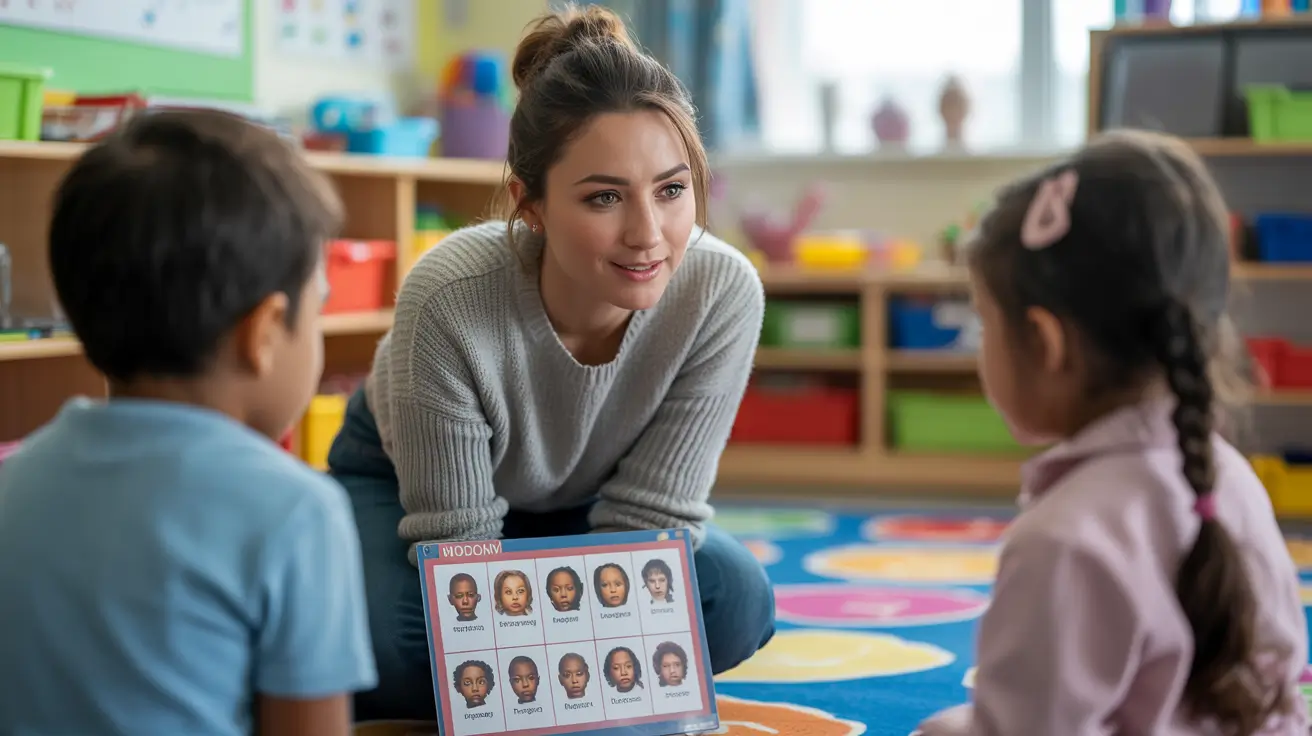
Engaging children in social-emotional learning has been found to have a range of positive implications for their outcomes in school. Here are five studies highlighting these benefits:
Reduction in Bullying and Violence: A study in the "Handbook of Youth Prevention Science" (2010) by Doll, Pfohl, and Yoon found that SEL can improve school outcomes by reducing bullying and violence.
Positive Behavioural and Academic Outcomes: The Family SEAL program was shown to lead to better behaviour, well-being, achievement, and social skills in a study by Ward (2012).
Improvement in Motivation and Learning Strategies: Guay, Lessard, and Dubois (2016) found that SEL can enhance students' motivation, learning strategies, academic achievement, and school perseverance.
Enhanced Academic Performance and Attitudes: Zins, Bloodworth, Weissberg, and Walberg (2007) demonstrated that SEL improves academic performance, lifelong learning, and school attitudes, behavior, and performance.
Significant Gains in Achievement: Durlak, Weissberg, Dymnicki, Taylor, and Schellinger (2011) found that SEL leads to improved social and emotional skills, attitudes, behavior, and academic performance, with an 11-percentile-point gain in achievement.
These studies collectively show that engaging children in social-emotional learning not only improves their academic performance but also positively influences their behavior, social skills, and overall well-being.
Social-emotional learning (SEL) represents a fundamental shift in how we understand student development and academic success. Far from being a supplementary programme, SEL provides the scaffolding for children to develop crucial competencies: understanding emotions, building relationships, making responsible decisions, and navigating social complexities. For educators seeking to cultivate resilient, empathetic, and academically successful students, integrating SEL into daily practice has become increasingly vital.
Key Takeaways:
Albert Bandura's social-cognitive theory provides crucial insights into how children acquire social and emotional competencies. Students learn not just through direct instruction but by observing peers and teachers model emotional responses, problem-solving strategies, and interpersonal behaviours. This observational learning becomes particularly powerful when combined with opportunities for guided practice and reflection.
The reciprocal nature of social-cognitive theory explains why classroom community matters so profoundly. Students simultaneously influence and are influenced by their social environment. A classroom where emotional expression is normalised and respected creates conditions for all students to develop stronger emotional literacy.
John Bowlby's attachment theory illuminates why relationship quality profoundly impacts SEL outcomes. Students with secure attachments - characterised by trust, safety, and responsiveness—demonstrate stronger emotional regulation and social competence. These secure relationships need not originate solely from home; teachers who provide consistent, warm, and responsive interactions can foster secure attachments that support emotional development.
This theoretical understanding transforms how we view challenging behaviours. Rather than seeing disruption as defiance, attachment-informed SEL recognises behaviour as communication about unmet emotional needs. This shift enables more compassionate and effective responses that build rather than damage relationships.
Maslow's hierarchy positions social-emotional needs as prerequisites for higher-order learning. Students struggling with belonging or self-esteem cannot fully engage with academic content.
This framework justifies prioritising emotional intelligence development alongside traditional curriculum goals.
Erikson's psychosocial stages highlight age-appropriate SEL focuses. Early childhood centres on autonomy and initiative, middle childhood on competence and industry, whilst adolescence grapples with identity formation. Understanding these developmental trajectories helps educators tailor SEL approaches to match students' evolving capacities and concerns.

Early childhood represents a critical window for SEL development. Young children's brains are particularly plastic, making this period optimal for establishing emotional and social foundations. Effective early years SEL begins with environmental design: calm spaces with soft lighting, comfortable seating areas for emotional regulation, and visual supports for emotion identification.
Circle time provides structured opportunities for emotional expression and listening. Rather than treating circle time as routine administrative tasks, skilled educators transform these moments into SEL laboratories. Children practise turn-taking, learn emotion vocabulary through "feelings check-ins," and develop empathy by responding to peers' experiences.
Mindfulness-based activities adapted for young learners - such as "belly breathing" with stuffed animals or "listening walks" - help children develop present-moment awareness and self-regulation skills. These practices, when introduced playfully and consistently, become lifelong tools for managing stress and maintaining focus.
Effective early years SEL requires educator collaboration and continuous development. SEL development teams within professional learning communities share strategies, troubleshoot challenges, and maintain consistency across classrooms. This collaborative approach ensures that SEL isn't dependent on individual teacher expertise but becomes embedded in institutional culture.
Regular team meetings might explore questions like: How do we respond when children struggle with emotional regulation? What language do we use consistently across classrooms? How do we communicate SEL progress to families? These discussions transform isolated practices into coherent, school-wide approaches.

Executive function—the mental processes enabling planning, attention, and task completion—significantly predicts academic success. SEL systematically develops these capacities. When students practise waiting their turn during group activities, they strengthen inhibitory control. Planning collaborative projects builds working memory and cognitive flexibility.
Research demonstrates that students with stronger executive function skills show better reading comprehension, mathematical reasoning, and scientific thinking. SEL provides the scaffold for developing these foundational cognitive capacities through emotionally engaging, socially embedded activities rather than isolated drills.
Chronic stress impairs memory formation, attention, and higher-order thinking. SEL equips students with tools to recognise and manage stress responses. Deep breathing, progressive muscle relaxation, and cognitive reframing become academic performance tools as much as emotional coping strategies.
Students who can calm test anxiety, manage perfectionism, and recover from setbacks maintain better access to their cognitive resources. This emotional regulation directly translates to improved test scores, more consistent homework completion, and greater classroom participation.
Modern education increasingly emphasises collaborative learning, yet many students lack the social skills to work effectively in groups. SEL systematically develops the communication, perspective-taking, and conflict resolution skills that make collaborative learning productive rather than frustrating.
When students can negotiate roles, integrate diverse viewpoints, and manage disagreements constructively, group work becomes a powerful learning multiplier. These collaborative competencies prepare students not just for academic success but for twenty-first century workplaces that prioritise teamwork and interpersonal effectiveness.

SEL fosters growth mindset—the belief that abilities can develop through effort and strategy. By helping students understand emotions around failure and challenge, SEL reframes struggle as learning opportunity rather than threat. This psychological shift profoundly impacts academic persistence and achievement.
Students who view mistakes as information rather than indictments take more intellectual risks, seek challenging tasks, and maintain effort through difficulty. These motivational benefits compound over time, creating trajectories of increasing academic engagement and success.
SEL's academic impact extends beyond immediate grade improvements. Students with strong social-emotional skills show better school attendance, lower dropout rates, and higher college enrollment. These long-term benefits reflect SEL's role in developing not just academic skills but academic identity—seeing oneself as capable, valued, and belonging in educational settings.
The cumulative advantage of SEL becomes particularly pronounced for students facing adversity. Trauma-informed schools that prioritise SEL help vulnerable students develop resilience and maintain academic engagement despite challenging circumstances.

SEL systematically cultivates empathy through structured activities and reflection. Literature discussions explore characters' emotions and motivations. Role-playing exercises help students experience situations from multiple perspectives. These activities move beyond superficial "walking in someone's shoes" to develop genuine understanding of others' experiences.
Culturally responsive teaching through SEL acknowledges diverse emotional expressions and relationship patterns. Students learn that empathy requires understanding not just individual feelings but cultural contexts shaping emotional expression and interpersonal expectations.
Effective communication involves more than vocabulary; it requires reading non-verbal cues, managing one's emotional expression, and adapting messages for different audiences. SEL provides structured practice in these sophisticated skills through activities like peer mediation training and restorative circles.
When conflicts arise - as they inevitably do - SEL-equipped students possess tools for resolution. They can identify underlying needs, generate creative solutions, and repair relationships after ruptures. These skills transform conflicts from relationship-damaging crises into relationship-strengthening opportunities for growth.
SEL promotes developing behaviours for learning that support all students' participation and belonging. When classrooms explicitly value diverse strengths, normalise struggle, and celebrate growth, marginalised students find space to thrive. This inclusive approach benefits not just struggling students but enriches the entire learning community.
Group norms developed through SEL processes - such as "mistakes help us learn" or "everyone's voice matters"—create psychological safety. Students feel secure taking intellectual risks, asking for help, and contributing unique perspectives when they trust their classroom community will respond supportively.

Integrate emotion words systematically throughout language instruction. During read-alouds, pause to name characters' emotions precisely: frustrated rather than mad, disappointed rather than sad. Create word walls featuring emotion gradients (irritated → angry → furious) that students reference during writing.
Frame word problems around social situations requiring emotional understanding. "Sarah felt nervous about her presentation. If her heart rate increased by 20 beats per minute, and her normal rate is 70 bpm, what's her current heart rate?" This integration makes abstract concepts concrete whilst practising emotional recognition.
History lessons provide rich opportunities for perspective-taking. Students research historical figures' emotional experiences, write diary entries from multiple viewpoints, or debate decisions considering historical actors' emotional contexts. This approach deepens historical understanding whilst developing empathy.

Explore the neuroscience behind emotions during biology units. Students learn about amygdala responses, prefrontal cortex regulation, and stress hormones. Understanding the biological basis of emotions enhances self-regulation by demystifying emotional experiences.
Visual arts, music, and drama provide natural SEL integration points. Students create artwork expressing emotions, compose music reflecting different moods, or develop theatrical pieces exploring relationship dynamics. These creative outlets offer alternative pathways for emotional expression and processing.
PE lessons offer embodied SEL practice. Students navigate competition stress, practise good sportsmanship, and develop team cohesion. Explicitly discussing emotions during physical activities - frustration with losing, joy in achievement, anxiety about performance - normalises emotional awareness in all contexts.

Geography lessons exploring global challenges develop social awareness and responsible decision-making. Students consider how climate change affects different populations emotionally, not just economically. This broader perspective cultivates empathy and motivates student agency for positive change.
Computing lessons address online relationships and digital emotional literacy. Students learn to interpret emotions without non-verbal cues, manage cyberbullying, and maintain healthy technology boundaries. These skills become increasingly crucial as digital interactions proliferate.
Implement brief reflection prompts concluding each lesson: "What emotion did you experience when solving that problem?" "How did working with your partner feel?" These micro-reflections build metacognitive awareness whilst reinforcing subject content through emotional processing.

Sustainable SEL requires leadership that models emotional competence and prioritises relationship quality. Principals who acknowledge their own emotions, admit mistakes gracefully, and prioritise staff wellbeing create cultures where SEL flourishes. This modeling cascades through the organisation, influencing how teachers interact with students and each other.
Responsive teaching approaches that adapt to students' emotional states become standard practice rather than exceptional accommodation. Staff meetings include emotional check-ins. Professional development addresses educator SEL alongside student SEL. These systemic changes embed SEL in institutional DNA rather than treating it as an add-on programme.
School design profoundly impacts emotional climate. Calm-down corners in every classroom, sensory gardens for regulation breaks, and flexible seating arrangements that facilitate different interaction patterns all communicate that emotions matter. These environmental modifications support promoting students' wellbeing through multiple pathways.
Visual displays celebrate emotional growth alongside academic achievement. Hallways feature emotion regulation strategies, friendship skills posters, and student-created artwork exploring feelings. These ambient reminders reinforce SEL concepts throughout the school day.
Measuring SEL progress requires moving beyond traditional academic metrics. Observational rubrics capture relationship skills development. Student self-assessments track emotional awareness growth. Portfolio approaches document SEL journey through artifacts like conflict resolution examples or empathy-demonstrating writing samples.
Regular data review identifies students needing additional SEL support before social-emotional challenges manifest as behavioural or academic problems. This proactive approach prevents escalation whilst ensuring all students receive appropriate SEL instruction intensity.

Many parents lack familiarity with SEL terminology and goals. Initial communications should connect SEL to outcomes parents value: academic success, friendship development, and future career readiness. Use concrete examples rather than abstract concepts: "When children can calm themselves down, they solve maths problems more accurately."
Developing a social-emotional curriculum becomes more effective when families understand and reinforce concepts at home. Regular newsletters sharing SEL vocabulary, highlighting classroom strategies, and suggesting home extensions create common language between school and family.
Move beyond information-sharing to experiential learning. Family workshops where parents and children practise SEL skills together build competence and buy-in simultaneously. Activities like family emotion charades, collaborative problem-solving challenges, or mindfulness exercises become shared reference points.
These workshops also surface cultural variations in emotional expression and relationship patterns. Acknowledging and incorporating diverse perspectives enriches the SEL programme whilst ensuring cultural responsiveness.
Provide specific, manageable ways families can reinforce SEL at home. Weekly challenges like "Gratitude Week" or "Kindness Missions" create structured opportunities for practice. Digital resources—apps, videos, online games—extend SEL learning beyond school hours.
Share simple strategies parents can embed in daily routines: discussing emotions during bedtime stories, problem-solving sibling conflicts using school frameworks, or practising deep breathing during homework frustration. These micro-interventions accumulate into significant SEL growth.
Some parents worry SEL detracts from academic instruction or imposes particular values. Address these concerns directly with evidence of academic benefits and emphasis on skill development rather than value imposition. Demonstrate how SEL enhances rather than replaces traditional learning.
Create opt-in enrichment opportunities for families wanting deeper engagement whilst maintaining baseline SEL for all students. This tiered approach respects family autonomy whilst ensuring universal SEL access.

Engaging children in social-emotional learning has been found to have a range of positive implications for their outcomes in school. Here are five studies highlighting these benefits:
Reduction in Bullying and Violence: A study in the "Handbook of Youth Prevention Science" (2010) by Doll, Pfohl, and Yoon found that SEL can improve school outcomes by reducing bullying and violence.
Positive Behavioural and Academic Outcomes: The Family SEAL program was shown to lead to better behaviour, well-being, achievement, and social skills in a study by Ward (2012).
Improvement in Motivation and Learning Strategies: Guay, Lessard, and Dubois (2016) found that SEL can enhance students' motivation, learning strategies, academic achievement, and school perseverance.
Enhanced Academic Performance and Attitudes: Zins, Bloodworth, Weissberg, and Walberg (2007) demonstrated that SEL improves academic performance, lifelong learning, and school attitudes, behavior, and performance.
Significant Gains in Achievement: Durlak, Weissberg, Dymnicki, Taylor, and Schellinger (2011) found that SEL leads to improved social and emotional skills, attitudes, behavior, and academic performance, with an 11-percentile-point gain in achievement.
These studies collectively show that engaging children in social-emotional learning not only improves their academic performance but also positively influences their behavior, social skills, and overall well-being.